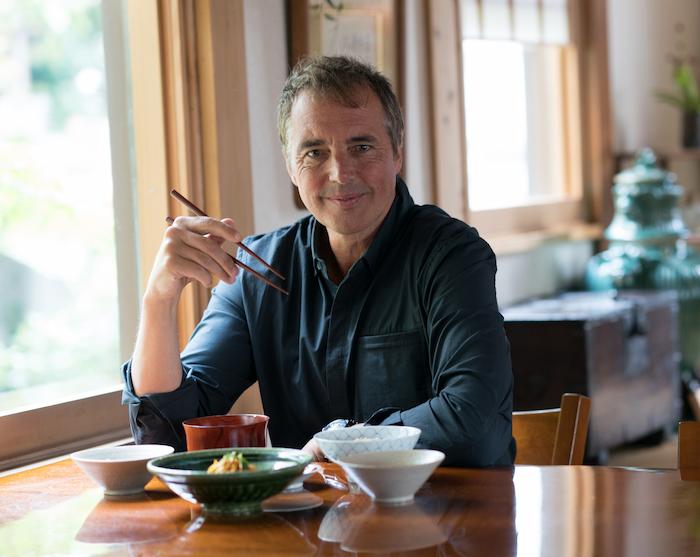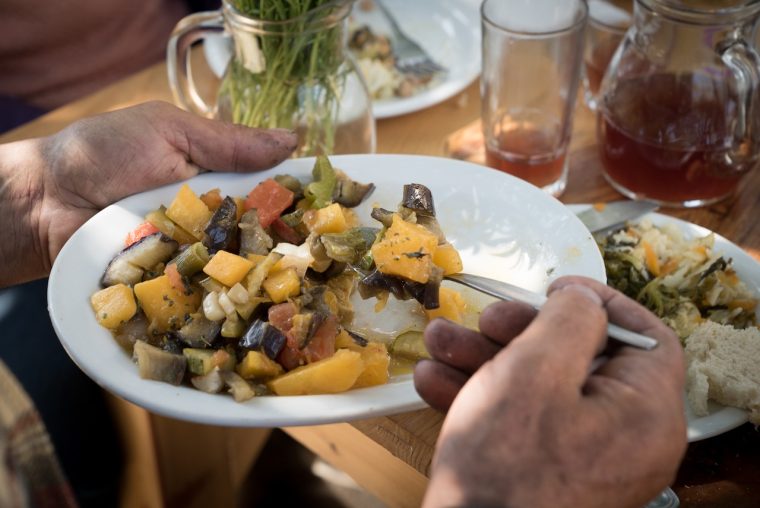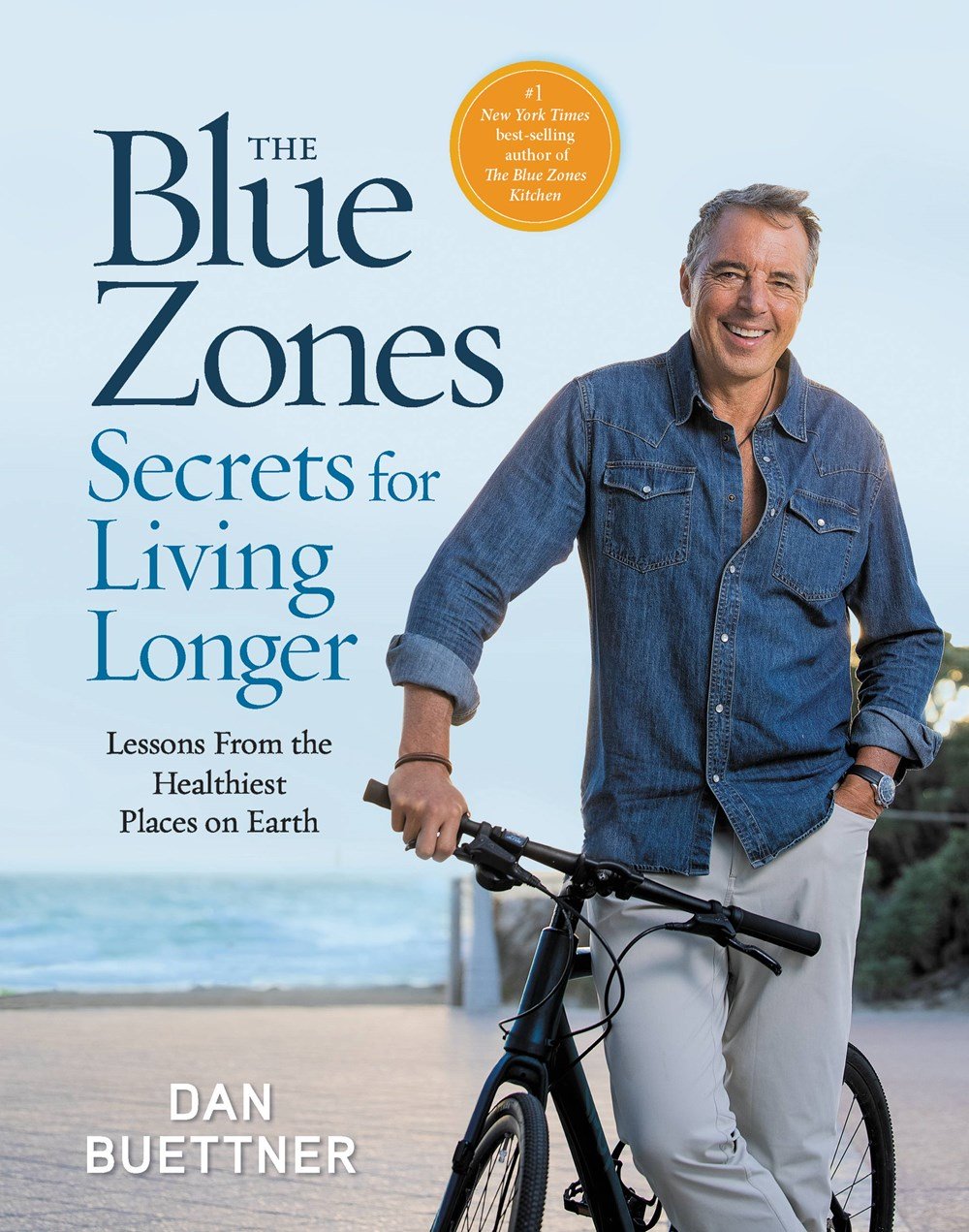Riddle me this:
How is it possible that, in recent years, America’s life expectancies have stagnated or even started to backslide while the average level of education has increased? You might think that a prosperous nation at its all-time smartest would see life expectancies trending up… but apparently you would be wrong, at least in America’s case. ?
The head-on, front-door solution to that riddle could fill several books. Fortunately, there’s also a back-door, quick-and-dirty way of solving that riddle, and it starts by focusing your attention on the word education.
In a sentence: the problem causing the riddle above is that we tend to think of education as something that ends.
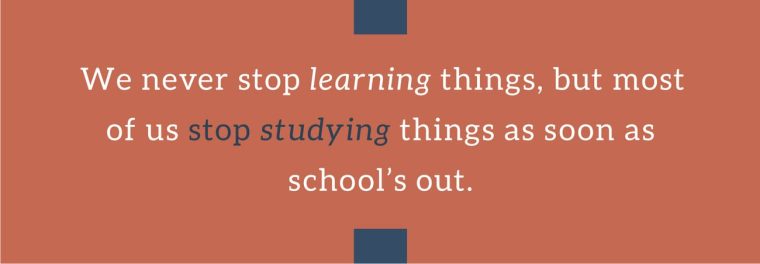
We lose the habit of educating ourselves, of paying deeper attention to challenging subjects even when nothing forces us to—especially because adult life can, at times, become a relentless forward march with very little time and energy to spare.
As smart as we might be (overall), typical Americans have a limited understanding of dietary and nutritional science because (A) it’s a small and often deficient part of secondary-school curricula and (B) almost nothing forces us to learn more about it once we’ve left school. We go out into the world as young, freshly “educated” adults, free to eat what we want…
… but alas, young Americans don’t always make the best food decisions, and dietary habits from that age tend to stick. Even knowing what we do, a lot of the resulting health problems seem to sneak up on people like rip currents: you always knew they were real, but by the time you can actually sense one, you’re already in trouble.
So I do want to applaud you (or better yet, encourage you to applaud yourself) for reading a newsletter like this one and educating yourself by choice. Information about health and wellness is incredibly valuable when all is said and done, and yet I often feel like I’m trying to lead horses to water. I can’t make ‘em drink, but I’m glad when they do.
If all you wanted was to read this light, easy, free newsletter, I’m happy to have you here. But in case you’re a particularly thirsty horse (so to speak), I should mention two upcoming opportunities for further education:
- Dr. William Li will be teaching a Metabolism Masterclass on Monday, April 24 at 12pm ET (the recording will also be sent to all registrants by email). Dr. Li is a well-respected physician, author of two NYT bestsellers, and an expert in the curative powers of nutrition; he’ll be sharing the latest research on food as medicine, and you’ll learn five ways you can boost your own metabolism!
- I’m a guest faculty member for the Institute of Integrative Nutrition (IIN), and I’ll be one of the contributors to their Nutrition for Life course which starts in May. You should start here with my free IIN sample course and see what all the fuss is about—but just so you know, you can save 45% if you enroll by April 23rd!
With those announcements complete, let’s get to drinking the proverbial water of this newsletter!

Over the last few editions, I’ve spent some time exploring happiness research, both how it works and what it has concluded thus far.
In Edition 14, I discussed the Harvard Study of Adult Development, which concludes that relationships are the single most important factor in our well-being.
Last time, in Edition 15, I got a little more granular about the kind of happiness research I’ve been involved with and that I’ve spoken about in my talks. To recap a bit and catch you up for today’s last entry in the series…
There are three main types of happiness: day-to-day emotions, life satisfaction, and sense of purpose (researchers measure each one independently). So when researchers try to find out what “happy people” have in common, they’re specifically trying to find the correlations between (A) the highest scorers in each of the three types of happiness and (B) whatever other factors they’ve measured across those subjects’ lives.
There are a number of factors that correlate strongly with happiness (of some kind), but the most valuable are the factors that correlate with all three kinds of happiness, and those “golden five” factors are as follows:
- The right job
- An active social life
- Owning a dog
- Having a love life
- Living in the right home/place
Of those five, it’s actually #5 that makes the biggest difference in a person’s overall happiness. Unfortunately, it’s also one of the hardest things to change.
So to wrap up this informal little series on happiness research, I wanted to share six quick suggestions for happiness close to home, or “how to lighten the load and turn frowns upside down no matter where you live.”
Suggestion № 1: Meditation (Yes, Seriously)
There are two main groups of people: those who already meditate, and those who don’t meditate and don’t get it. The former group doesn’t need my help, so I guess I’m addressing the latter here.
First: why even consider it? Meditation lowers heart rate, increases blood circulation, improves self-reported well-being, and (recent evidence suggests) boosts the production of serotonin. That might sound good enough on paper, but let me translate that into what you experience: you feel cooler and calmer but also a bit sharper, you’re in a good mood more of the time, and you get more of that contented, nice-to-be-home feeling in your chest.
Doesn’t that sound like a pleasant boost to everyday life?
I already wrote a (much longer) introduction to meditation in Edition 10, and suffice it to say that the “how-to” of meditation is highly variable because it’s so personal. It’s time spent inside your own head, where only YOU can know the best ways to make yourself comfortable.
Still, to help you understand what meditation is/does and why it’s so popular worldwide, I’ll sketch some quick comparisons between meditation and similar terms you already know:
Prayer ? Prayer is directed outwards (to God, the universe, etc.), whereas meditation is directed inwards or nowhere in particular. In a similar vein, prayer tends to involve some kind of focus or message, whereas meditation isn’t so concerned with a “conversational” train of thought. But something they have in common: doing either one well allows you to surrender your need for control, if only for a moment.
Sleep ? If sleep is like taking your car to the mechanic for a full service, meditation is like pulling over to cool the engine and clean the windshield. Meditation can’t replace sleep, of course, but it complements it quite well, and it allows you to access some of the same benefits in a much shorter time frame. It’s a quick reset for the brain.
Contemplation ? If contemplation is the act of devoting your full attention to thinking about something, then meditation is the act of releasing your full attention to think about nothing. Contemplation is when the mind seeks refuge from outside distractions and interruptions; meditation is when the mind seeks reprieve from the responsibility of directing its own thoughts.
Suggestion № 2: Pursue Financial Security
True, money can’t buy happiness… but that doesn’t mean money has nothing to do with happiness.
Consider, for example, the oft-repeated idea that increasing your income beyond $75K per year won’t make you happier—and that’s true, even if (by now) those numbers need to be adjusted for inflation.
But a lot of people forget the first half of that idea: that more money does correlate with increased happiness up to that $75K line, and I probably don’t need to explain why. In a sentence: happiness requires us to meet our needs, and money provides for those needs.
I chose my words carefully; notice that the advice is NOT to pursue “wealth” or “money” or “income.” There’s overlap between the terms, of course, but I think financial security is the best (phrasing of the) goal because it’s focused on the only two money-related things that you really need to be your happiest: (1) enough income to satisfy your daily needs and (2) the reassurances of reliable income and/or long-term planning.
In general, my advice is to never underestimate the value of peace of mind. It’s an important ingredient for happiness.
.
Suggestion № 3: Optimize Your Home
Maybe you can’t control where you live or what the surrounding area is like, but you can do a LOT to make your own place of residence more comfortable to you both physically and psychologically (even if you don’t own it and can’t make the more radical, permanent changes like knocking out walls).
If you need inspiration, I’m told that HGTV, Pinterest, and the rest of the internet are good places to look. This is a creative proposition, so start hoovering up some ideas!
Three of my favorite ideas for happiness-boosting home improvements:
- Lighting in general, but especially natural light. Try to make full use of the available windows, because sunlight really does hit the eyes and brain differently and we all need a bit of it to keep our circadian rhythms running on time. At the same time, try to be generous with your artificial-lighting options, especially in rooms without much access to natural light; brighter rooms really are easier on the eyes (in both senses of the term).
- Areas of social overlap. Wherever people are likely to congregate in OR near your house, focus on making these places comfortable and conducive to socializing—because it’s usually the social stuff that does the most to help our health and our happiness. The kitchen is obviously very important in this regard, but depending on your “social geography,” a back porch or front stoop might also be a good place to make more comfortable.
- Your “pride shrine.” This should be a small spot in your house that you pass by on a regular basis so you’ll see it a few times a day. In/on the pride shrine, collect your favorite pictures of your children, reminders of your accomplishments, and other mementos that bring back happy or pride-inspiring memories. It feels good to look at it, and over time these good feelings do add up to something!
Suggestion № 4: Nurture Your Social Network
What this looks like in day-to-day practice will vary a lot (depending mostly, perhaps, on your level of extraversion). Some people could happily juggle an entire small town’s worth of social connections in person, while other people would prefer a small circle of confidantes who may not even be physically nearby.
Either way, we are social creatures who find some of the most essential joys and comforts of life through connections with other people—even if those connections aren’t always strong, enduring, or eternal.
A few things I would say:
- Loneliness is a killer, and it’s also just heartbreaking. These times are tougher than usual for putting yourself out there, but it’s worth the effort in the long run of things. People have more in common than they usually realize!
- You’re the sum of your five best friends, or the five people you spend the most time with. So close friends are very important, and it’s worth taking the occasional proactive effort to nurture, maintain, or even rekindle these relationships wherever we are.
Suggestion № 5: Put Work In Its Proper Place
I don’t know your profession, so I don’t presume to tell you how you should treat your own career. Still, let’s remember that we’re talking about happiness here (that’s the goal), and that the #1 most common regret of the dying is that they worked too much.
So I’ll just leave two suggestions here. Hopefully you have the freedom to keep both of them in mind, but if you don’t have as much control over your workload (and so forth), you can still make use of the second:
- If you’re making $75K (or the updated equivalent), start pulling back from your work to the extent that you can. As we already discussed, the extra money won’t make most people happier. The extra time, however, makes a huge difference in most people’s lives, and they don’t regret taking it.
- If you can’t leave your job (or reduce your involvement as much as you’d like), make sure you’ve got an office buddy or two. That’s the single most important thing you can do to improve your personal experience wherever you already work.
Suggestion № 6: Strive for Local Community
If you’re cynical about where you live, you have my sympathies.
I know that, anywhere you go, you’ll find people who don’t feel like they belong there, or who simply don’t like the places themselves. Finding the perfect place to call home isn’t easy—and even if it were easy, moving is one of the hardest and most maddening things in the world, and it’s simply not tenable for a lot of people a lot of the time.
So if you can’t pursue a “dream home” somewhere off in the clouds, just know that you can always settle—and if that sounds horribly depressing, just consider that any settler of days gone by was someone who chose to embrace their surroundings rather than fighting them. Every worthwhile place was once wilderness.
For all but the most remote communities (and even some of them, too), I have one little suggestion of my own here: buy a bike, or dust it off if you already have one. Take it for a ride around your neighborhood. Stop and talk to people; get to know your surroundings from a vantage point that isn’t in a car. It’s no coincidence that some of the happiest communities in the world are very bikeable and walkable.

Last time in Edition 15, I continued the discussion of fats to talk about frying—what it does, how it works, and why it’s a vital tool in the culinary toolbox.
As I said before, I want to be careful to avoid any blanket endorsement of frying, because it certainly doesn’t make the food healthier for you. At the same time, we all know how it can make foods tasty, and there is room for compromise between delicious and nutritious here.
You might notice that this is a new section called Tools & Techniques. In writing today’s lesson, I realized that there’s a lot of useful product and how-to information that I’ve not yet tapped in Eating to 100. I won’t use this section to promote any specific (brands of) products, but I will use it to tell you about some useful blue-zone-friendly items and how they work (Tools), or to explain how to do some of the stuff you’d see done in their kitchens (Techniques).
Today’s lesson: two techniques for healthy(-er) frying! I’ll mostly be talking about sautéing, but I would be remiss if I didn’t start with…
№ 1: Air Frying
I don’t have much experience with air-frying foods, and there’s only so much I can say about its technique because, well, it doesn’t require much “technique” per se. A machine does 99% of the work for you.
Still, it’s a neat concept, and I’ve heard really good things about the tastiness of the food—especially considering how little fat it requires.
The basic idea here is that you prep your ingredients with a little bit of oil on the outside, then put them in a basket in a standalone appliance that looks like a Crock Pot with a taller lid. The air fryer then blasts the outside of the food with hot air—much like a conventional oven, except with way more convection because it’s a much smaller oven that circulates the hot air a lot faster.
Because the fat is (lightly) coating the outside of the food, it becomes the main buffer between heat and food, just like any other frying method. That’s why the method is called “air frying” and not some variant of “baking.”
Again, not a technique per se, but it’s worth mentioning because of how little fat it requires and how much people are liking it nowadays.
But enough of the new school! Let’s talk about…
№ 2: Sautéing
It’s worth repeating that the term sauté comes from the French word for “jump,” and this is important because it perfectly captures what the technique is supposed to do.
As you might’ve seen in restaurant kitchens, sautéing is where the cook shakes the pan over the flame, tosses its contents in the air, and then catches them in the pan again. (The impressive flash of flame is a lot harder to create without restaurant equipment, and it’s not a requirement of the technique; it’s just flair for those who are good at it.)
Sautéing is the healthiest (old-school) method of frying things because it doesn’t require much fat—and it doesn’t require much fat because it’s a lot harder for things to stick and burn when the food is constantly jumping out of the pan.
? But is it hard to sauté things? Restaurant cooks can seem like magicians.
I know what you mean. Fortunately, sautéing is one of those skills that’s hard to master but easy to learn. In other words: you don’t need much skill or practice to sauté things correctly, though you also shouldn’t try to mimic restaurant cooks starting out (particularly how high they turn the heat and how high they toss the food). You’ll just wind up slinging food all over your kitchen.
All you need are your ingredients, a fat of your choice (I usually recommend EVOO), and the right kind of frying pan/skillet. Good chance you have one, but by the “right kind” of pan, I mean that it should meet all of these criteria:
- Manageable size. I would usually recommend 10 inches, give or take.
- Flared (curved) sides. The smooth jumping and catching motions of sautéing require that slope at the edge of the pan, so anything with vertical sides won’t do.
- Shallow with a flat bottom. The flat bottom provides an even cooking surface for the food while it’s at rest, and shallower proportions make it easier to toss and catch the food.
At this point, I’ll state the obvious: YouTube is your friend here in a way I could never be in print. Still, here are the basic steps of sautéing, broken apart so you know what you’re seeing:
- Heat the pan dry over medium-high heat for a minute or two. You want to get the pan at least halfway hot before you add anything, because you don’t want your fat to break down prematurely by exposing it to all the extra heat. (A minute of dry heat won’t hurt your pan, even if it’s nonstick.)
- Add the fat to the pan. In the same fashion, you want to give the fat a moment to heat up before adding other ingredients. Having said that, 15-30 seconds is usually enough; fat heats up pretty quickly, especially when it’s the only thing in a hot pan.
- Start adding your ingredients. In a lot of cases, you want to start with the aromatics (like garlic) so that they can infuse into the fat and spread that delicious flavor around more evenly.
- Pick up the pan and loosen the first round of ingredients. You do this by picking up the pan, holding it even and parallel with the ground, and shaking it forwards and backwards like you’re stabbing someone in front of you with a tiny sword. This repositions the food and keeps it from sticking, and it’s all you need to do when you only have the first ingredients (like garlic and onions) in the pan.
- Add the rest of your ingredients at the appropriate times. You should continue to loosen things every 30 seconds, give or take, but things only need to start jumping once there’s enough food to need to “take turns” in the hottest section of the pan, which is the flat bottom.
- Get to tossing things! Again, YouTube is your friend here, but the tossing motion results from your wrist moving the skillet outwards (away from your body) and flicking slightly upwards and back at the end of that motion. If you do it right, the catching motion is much the same in reverse; the food jumps in a tight parabola upwards and slightly towards your body, then down into the pan as you reset your wrist back where you started. (As you practice, you’ll learn how to adjust the return motion to catch anything that flies out of line.
Remember: practice makes perfect! If you’re new to sautéing and you’d want to get a feel for it with a cold pan (without cooking anything), you can practice your tossing-and-catching technique with a couple handfuls of uncooked rice. Once you’ve mastered dry rice, try moving up to a handful of marbles (warning: it’s a lot harder).

Creamy Squash Soup With Corn Salsa and Wild Onion Chimichurri
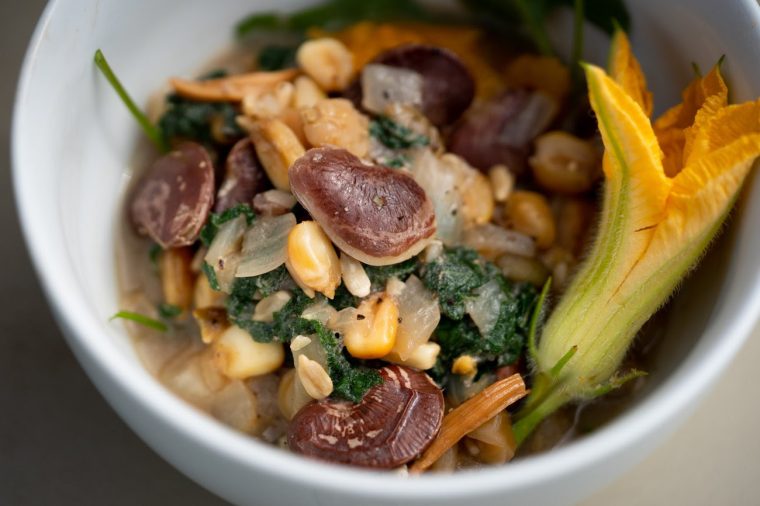
Ingredients
For the Chimichurri:
12 wild onions or 4 to 5 green onions, trimmed
1⁄4 cup chopped parsley leaves (stems removed)
1⁄4 cup apple cider vinegar
1 tablespoon pure maple syrup
2 teaspoons salt
1⁄4 cup sunflower oil
For the Soup and Salsa:
6 ears sweet corn, shucked
2 tablespoons sunflower oil
1 large yellow onion, diced
4 large garlic cloves, minced
6 cups water
2 pounds winter squash, peeled, seeded, and cut into 2-inch cubes
Salt
Freshly ground black pepper
2 small jalapeño peppers, seeded and very finely diced
The Method
To make the chimichurri, on a grill or in a very hot, dry cast-iron skillet over high heat, cook the wild onions until nicely charred in some spots but not totally blackened.
Coarsely chop the charred onions and add them to a blender or food processor with the parsley, vinegar, maple syrup, salt, and oil.
Puree the mixture until it reaches a slightly chunky, pesto-like consistency. To make the soup, cook the ears of corn on a grill, turning occasionally, until they are lightly charred on all sides. Remove the corn from the heat and set it aside to cool.
Add the oil to a large (5- to 7-quart) Dutch oven or stockpot and heat over medium heat.
Add the yellow onion and garlic. Cook, stirring frequently, until the onion and garlic have caramelized and turned a light golden brown. Cut the corn from the cobs, reserving the cobs for the soup and the kernels for the salsa.
Put the cobs in the pot with the sauteed onion and garlic. Add the water to the pot, place it over high heat, and bring it to a boil. Reduce the heat to a simmer (if cooking over a fire, move the pot to a cooler spot on the grill to maintain a simmer).
Allow the mixture to simmer for 15 to 20 minutes, until the broth becomes fragrant with the aroma of sweet corn and the liquid has reduced to about 4 cups.
Add the cubed squash, bring the liquid back to a simmer, and cook until the squash is very tender. Working in batches, use an immersion blender or a countertop blender (allow to cool slightly before putting into blender) to puree the soup until smooth. Season with salt and black pepper to taste.
To make the salsa, combine the reserved corn kernels with the jalapeño and stir to mix well. Season with salt and pepper to taste. To serve, ladle the soup into bowls, garnish with a generous scoop of the roasted corn salsa, and drizzle with the wild onion chimichurri.
